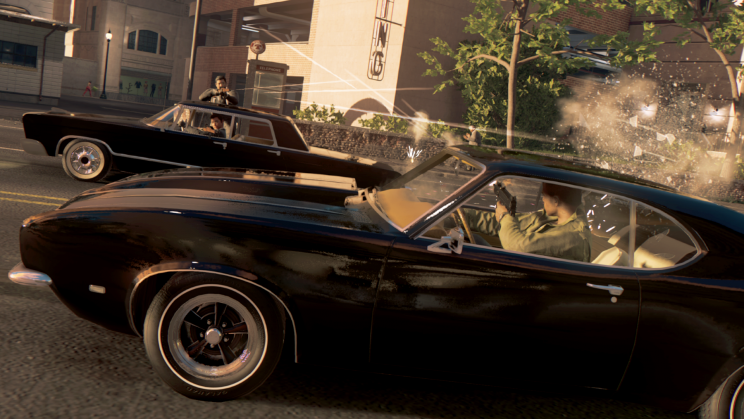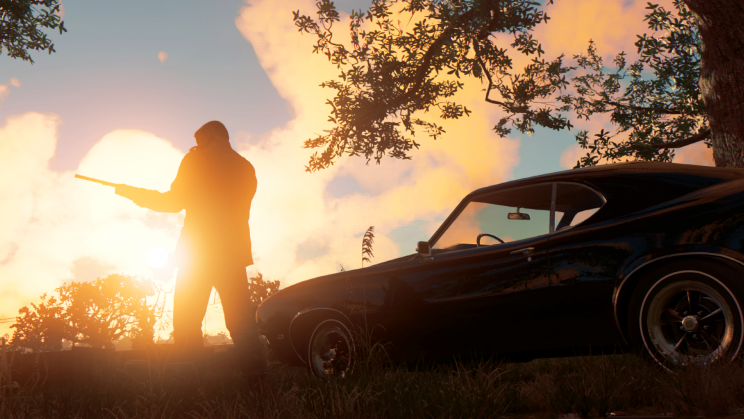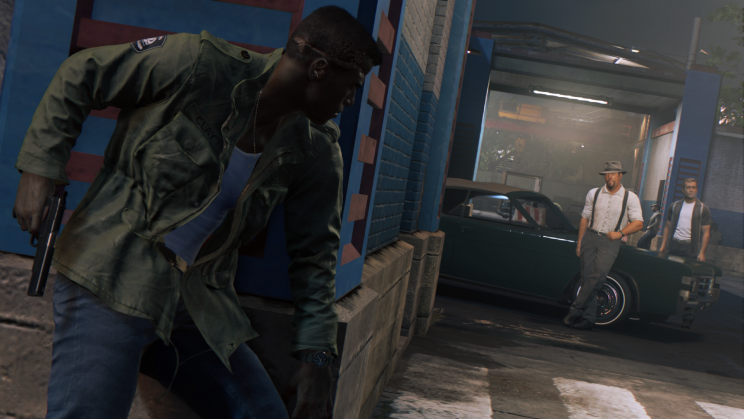Review: Impressive storytelling can’t get ‘Mafia III’s tired gameplay off the hook

Any writer will tell you that the intro is the hardest part. Take this review. Intro stinks already.
That’s true for video games, too. Few nail the opening beats, and that can often make or break the whole experience. Don’t explain the mechanics clearly and gamers will be annoyed and confused; overexplain them and gamers will be annoyed and, well, just really annoyed.
The reason I bring this up is that no game in recent memory storms out of the gate as explosively as 2K’s “Mafia III.” Over its first several hours, it’s a captivating foray into a beautifully-realized, well-written take on 1960s America as seen through the eyes of a soldier returning to his troubled hometown. It deals with subject matter few games would dare tackle, yet “Mafia III” unflinchingly dives in and delivers what is, at first, one of the genuinely coolest video games of 2016.
It’s just too bad that feeling doesn’t last.
Welcome home
You’re Lincoln Clay, an African-American veteran back from his last tour of duty. It’s 1968 and you live in New Bordeaux, a faux New Orleans that, as you would expect from a southern town in 1968, is a pretty unpleasant place for African-Americans. Racism is pervasive and gangs rule the city. Your particular “social group”, a small outfit in a poor district, gets tangled up with mob heavyweight Sal Marcano, who turns Lincoln’s homecoming into a bloody nightmare. From the ashes of his former life, Lincoln rises to exact revenge on the family that took his – and to take over the city along the way.

What’s remarkable about “Mafia III’s” opening isn’t the specifics of its story, however, so much as its documentarian manner. The narrative flashes through time, interviewing the protective Father James during the mafia war in the 60’s here, catching up with the priest in the future there. A CIA buddy testifies before a commission, enigmatically telegraphing the in-game action. It’s clever and effective.
Helped along by superb writing and acting, “Mafia III” weaves a multi-layered socio-political drama that captures the nuances of its complex era with surprising grace for a big, splashy action game. That includes the appropriate (if at times overwhelming) use of racial epithets to hammer home the tension and unease of 1968 America. It’s touchy stuff, but the portrait “Mafia III” paints of its conflicted city works. For better or worse, New Bordeaux feels like a real place in a real time, a feat any open-world game would love to achieve.
Repetitive gameplay
But when it eases back on its storytelling and thrusts you into its action, “Mafia III’s” carefully crafted fa?ade begins to crack.
Lincoln’s goal is to take over the ten districts of New Bordeaux, systematically climbing the mob food chain by picking off Marcano’s lieutenants and capos. Lincoln replaces these schlubs with his handpicked trio of underbosses; a metagame pressures you to fairly divvy up the town to keep all three happy, but it’s not well-developed.
Capturing districts unlocks new abilities, like calling in a car if you’re stuck somewhere, taking the heat off by bribing the cops, or getting backup for a big shootout. It sounds interesting, and at first, it is. But the desire to earn more cash to buy more weapons is mitigated by brain-dead AI and overpowered stealth, which turns combat into a cakewalk.

You can whistle, for instance, to draw the attention of a nearby guard, who will handily wander over to your hiding spot. One button press later and he’s lying in a heap behind you. Other guards won’t notice unless you do this sort of thing right in front of them; whistle again, and another guard will unwittingly stroll by. At one point I killed a half-dozen guys hiding behind a trash can. Oscar the Grouch, pied piper of doom.
You do this over and over again, district after district, warehouse after warehouse, watching sadly as what started as a well-told drama devolves into an open-world grind. A helping of side missions do little to break up the monotony, as they too fall into the same repetitive loop as the main missions. There are plenty of doodads to collect – Alberto Vargas posters, old Playboy magazines (yes, these include uncensored centerfolds), some LP covers — but it just feels like scattershot busywork.
Worse, it’s missing one of the key features that makes open-world grinds tolerable: fast travel. I get that to stay authentic, “Mafia III” doesn’t want you fantastically warping around its world. But that exists in other games because walking or driving back and forth across a massive map quickly wears thin. In the case of New Bordeaux, a city that looks great but isn’t really teeming with things to do, it becomes a painfully mundane time- and interest-killer.

It’s a good thing the game features one of the best soundtracks in video game history, as it helps take your mind off the endless driving. Whoever’s in charge of licensing at 2K should get a promotion, because the 100 or so tracks here span an astonishing variety of era-specific talent. The Rolling Stones, Sam Cooke, Dusty Springfield, Creedence Clearwater Revival, Aretha Franklin – on and on goes the list. It’s so good, I’d often stop and just sit in my car to let the song finish before rushing into yet another warehouse shootout.
Where it soars in its audio, “Mafia III” stumbles in its technical delivery. Glitches are frequent and bizarre, from missions that refuse to start or finish to physics-defying acts of pure terror. Patchable, sure, but it speaks to a game that is too big for its britches.

And maybe that’s where things went wrong. Between its sharp writing and excellent performances, “Mafia III’s” narrative is a winner. Perhaps if developer Hangar 13 hemmed it in a bit and tightened its screws rather than spend so much energy building a pretty but largely empty world to explore, “Mafia III” would have snapped into focus. It’s almost worth it for the cut-scenes alone.
But for all its brilliance – and there are undoubtedly some very special moments here – “Mafia III” never manages to maintain its initial momentum. There are too many other open-world games that do what it does better, smarter, and with more stability. Like its motley cast of gangsters, “Mafia III” is simultaneously likable and unpleasant, a tempting offer that all but the most dedicated gamers would do well to refuse.

What’s Hot: Beautifully told story; handles sensitive subject matter well; incredible soundtrack; starts with a bang
What’s Not: Continues with a whimper; repetitive, grinding gameplay; bad AI; prone to glitches
Platform reviewed: PS4
More from Ben:
Review: Anki Overdrive gets chaotic with fun, flawed Supertrucks
‘Sylanders Imaginators’ will let you create and 3D print your own action figure
Review: Race at your own speed in big, beautiful ‘Forza Horizon 3’
Ben Silverman is on Twitter at ben_silverman.